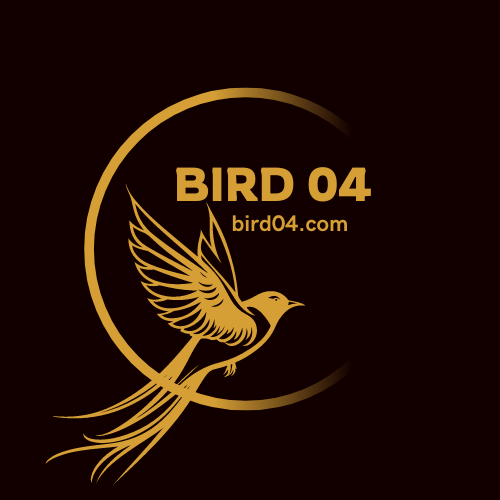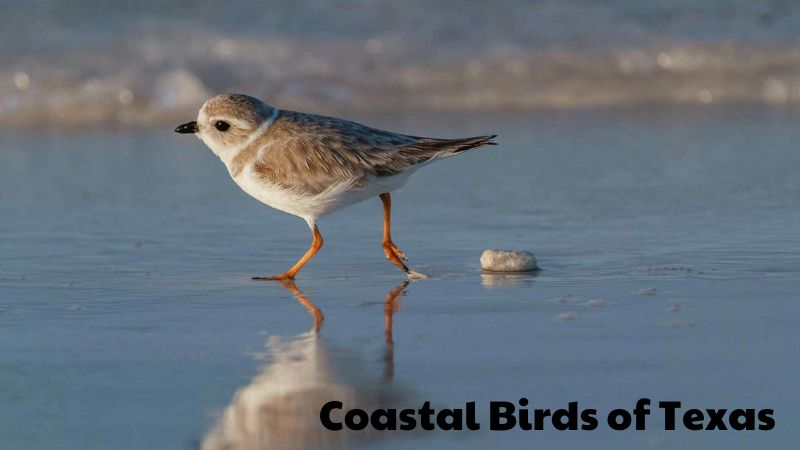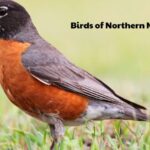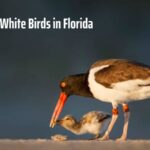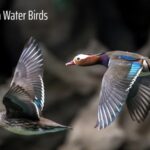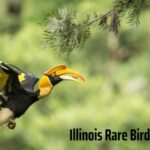Bird Care
The Coastal Birds of Texas: A Rich Tapestry of Avian Life
The coastal birds of Texas play a crucial role in the state’s diverse ecosystems, showcasing a remarkable variety of species that inhabit its shores and wetlands. From the graceful herons to the lively gulls, these birds contribute to the rich tapestry of life along the coast.
Understanding their adaptations and challenges is essential for ensuring their survival and preserving the delicate balance of these environments. Let’s explore the details with Bird04!
General Characteristics of the Texas Coastal Environment
Diverse Ecosystems
The Texas coastline is home to a variety of ecosystems, including:
- Wetlands: These areas are crucial for filtering water and providing habitat for numerous species.
- Beaches: Sandy shores support various wildlife and offer recreational opportunities.
- Islands: Barrier islands protect the mainland and serve as nesting grounds for birds.
- Mangroves: These coastal forests provide vital habitats and help prevent erosion.
Abundant Food Sources
The coastal waters of Texas are rich in biodiversity, providing a wide range of food sources, including:
- Fish: Species such as redfish and speckled trout are common and important for both ecology and local fisheries.
- Shrimp: Texas is known for its shrimping industry, which is vital for the economy and local cuisine.
- Crabs: Blue crabs and other crab species thrive in these waters, contributing to both ecosystems and fisheries.
- Insects: Coastal areas support a variety of insects that play key roles in the food chain.
Influencing Factors
Several factors influence the coastal environment:
- Seasons: Seasonal changes affect the behavior of wildlife, plant growth, and water conditions.
- Tides: Tidal movements impact habitat availability and species distribution along the coast.
- Human Activities: Urban development, pollution, and fishing practices can significantly affect coastal ecosystems, highlighting the need for sustainable management.
These elements combine to create a rich and complex coastal environment that is vital for both wildlife and human communities in Texas.
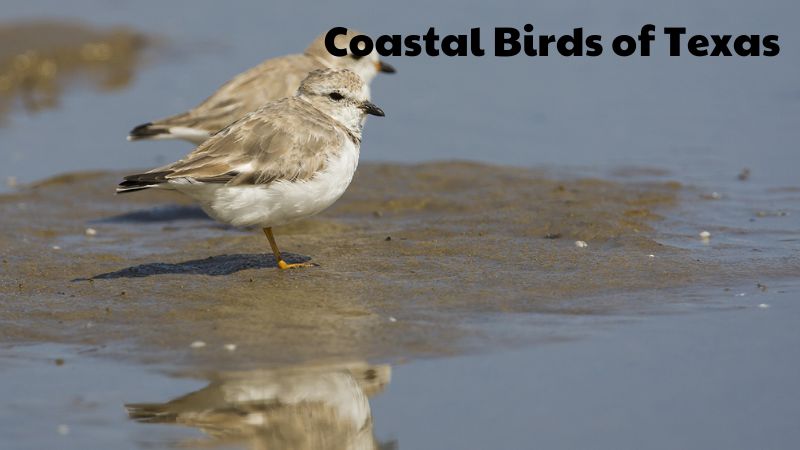
Introduction to Representative Bird Species of Texas
Coastal Birds
- Gulls (Laridae Family)
- Species: Various species, including the Western Gull and Ring-billed Gull.
- Identification: Gulls are typically medium to large birds with long wings, webbed feet, and a variety of plumage patterns.
- Behavior: Known for their adaptability, they often scavenge for food and are frequently seen along beaches and piers.
- Cormorants (Phalacrocoracidae Family)
- Species: Double-crested Cormorant is common in Texas coastal waters.
- Habitat: They thrive in both freshwater and saltwater environments, often found near shorelines and wetlands.
- Diet: Cormorants primarily feed on fish, using their excellent diving skills to catch prey.
- Terns (Sternidae Family)
- Species: Common Tern and Forster’s Tern are prevalent in Texas.
- Migration: Terns are known for their long migratory routes, traveling thousands of miles between breeding and wintering grounds.
- Characteristics: They are slender, with long wings and tails, and often exhibit graceful flight patterns.
Marsh Birds
- Herons (Ardeidae Family)
- Species: Great Blue Heron and Snowy Egret are well-known herons in Texas.
- Hunting Technique: Herons are skilled hunters, using stealth to stalk and ambush fish and amphibians in shallow waters.
- Habitat: They prefer wetlands, marshes, and along the edges of lakes and rivers.
- Bitterns (Botaurus Family)
- Species: American Bittern is a notable species found in Texas.
- Breeding: They are secretive birds, often nesting in dense marsh vegetation.
- Behavior: Known for their distinctive “bittern” call, they can be difficult to spot due to their camouflage.
- Egrets (Ardeidae Family)
- Species: Great Egret and Cattle Egret are common in marshy areas.
- Ecosystem Role: Egrets play a vital role in controlling fish and insect populations, making them important for ecological balance.
Mangrove Forest Birds
- Kingfishers (Alcedinidae Family)
- Species: Belted Kingfisher is a prominent species in Texas.
- Adaptations: They are characterized by their large heads, long beaks, and blue plumage, well-suited for catching fish.
- Habitat: Often found near rivers and lakes, they perch on branches to spot their prey.
- Robins (Turdidae Family)
- Species: Eastern Bluebird is a common sight in Texas.
- Song: Known for their melodious songs, bluebirds are often associated with open fields and woodland edges.
- Behavior: They are cavity-nesters, utilizing abandoned woodpecker holes or birdhouses for breeding.
Adaptations of Birds to Coastal Environments
Wings
- Long, Strong Wings: Many coastal birds, such as gulls and terns, possess long and powerful wings that allow them to fly long distances. This adaptation is crucial for foraging over vast ocean areas.
- Shorter Wings: Some birds, like certain species of shorebirds, have shorter wings that enable them to maneuver efficiently while gliding over water and rocky shorelines.
Legs
- Webbed Feet: Birds like ducks and cormorants have webbed feet, which are essential for swimming and diving. These adaptations help them navigate through water easily and catch fish.
- Long Legs: Species such as herons and egrets have long legs that allow them to wade through shallow waters and walk on mudflats. This adaptation helps them hunt for prey while keeping their bodies above water.
Beaks
- Long, Sharp Beaks: Many coastal birds, like kingfishers, have long and pointed beaks that are effective for catching fish. This specialized beak shape allows them to probe into the water with precision.
- Flat Beaks: Birds such as sandpipers have flattened beaks that enable them to sift through sand and mud to filter out small invertebrates and other food sources.
Coloration
- Bright Colors: Some coastal birds, like the Roseate Spoonbill, exhibit vibrant colors to attract mates during the breeding season. These eye-catching hues are essential for courtship displays.
- Dark Colors: Other species, such as many herons, possess darker plumage that provides camouflage against predators and helps them blend into their surroundings while hunting.
These adaptations allow coastal birds to thrive in their environments, enhancing their survival and reproductive success in diverse and dynamic coastal ecosystems.
Threats and Conservation Efforts
Threats to Coastal Birds
- Habitat Loss: Coastal development, such as construction and urbanization, leads to the destruction of critical habitats like wetlands, beaches, and mangrove forests. This loss reduces nesting sites and food availability for various bird species.
- Environmental Pollution: Pollution from agricultural runoff, plastic waste, and oil spills significantly impacts coastal ecosystems. Contaminants can harm birds directly through ingestion or indirectly by affecting their food sources and breeding areas.
- Illegal Hunting: Poaching and illegal hunting pose serious threats to many bird species. Unsustainable hunting practices can lead to population declines and disrupt local ecosystems.
- Climate Change: Rising sea levels, increased storm intensity, and changing weather patterns due to climate change threaten coastal habitats. These changes can lead to loss of nesting sites and altered food availability, impacting bird populations.
Conservation Measures
- Establishing Protected Areas: Creating wildlife reserves and protected areas helps safeguard critical habitats for coastal birds. These zones provide safe nesting sites and ensure the preservation of biodiversity.
- Reducing Pollution: Implementing measures to minimize pollution, such as stricter regulations on waste disposal and promoting sustainable agricultural practices, can significantly improve the health of coastal ecosystems.
- Wildlife Protection Campaigns: Public awareness campaigns and education programs are essential for promoting the protection of wildlife. By informing communities about the importance of coastal birds and their habitats, we can foster greater support for conservation efforts.
Conclusion
In conclusion, the coastal birds of Texas are not only vital to the region’s biodiversity but also serve as indicators of environmental health. By understanding the threats they face and implementing effective conservation measures, we can help protect these remarkable species and their habitats. Ensuring their survival is essential for maintaining the rich ecological balance along the Texas coastline.
